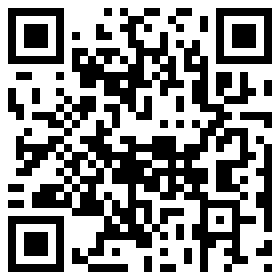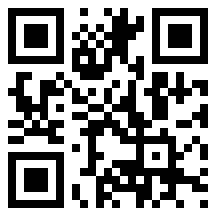I said, in so many words: Starting on a good note, we had an excellent session in Ustream. It was set up and running by Kim Cofino who is to be Jen Wagner's guest on Women of Web 2.0 this week. She'll be worth listening to. She has twittered me recordings of the session here:
http://www.ustream.tv/recorded/TKRcHIoaxJPcdL2rwLIJW5.VBYK3cgTY (view in popup
if any problem), and http://www.flickr.com/photos/superkimbo/sets/72157603729759649/
Doug Symington was kind enough, not to mention being on the ball enough, to webcast the event, and we're hoping to enlist him for a similar favor on Jan 18.
Now, for the downside, you never know what you'll encounter when you go on these gigs at schools in strange places, in this case in a foreign country. We were asked to prepare presentations, or at least to be ready to address the issue of reading in the context of the school we were visiting, and we thought we were promised wireless. That didn't seem to have been registered beforehand, but no problem, we were walked up to the IP dept where someone dutifully typed in our fixed IP addresses. We returned downstairs and prepared to set up our session. I had the usual ambitious mix of online venues planned and was trying to reach Skype, when someone noticed my browser swimming and said, Skype? You won't be able to skype here, that's locked down. Meanwhile edtechtalk.com chat room was not getting anywhere, Java chat apparently locked down too.
I tried Elluminate. There are three proxies to configure, your browser, Elluminate itself, and java. I hit all three in succession. My computer is slow, so this took some time. Over the course of an hour of trying different browsers, and rebooting the computer, I realized that this kind of traffic was also blocked on the ports we were given to use. Meanwhile, the Ustream had started and our session had begun.
I couldn't reach Elluminate as promised but talking in Ustream I directed traffic to my slide show at
http://www.slideshare.net/vances/reading-and-the-internet-228977/. Doug Symington, via the Twitter and Skype and Worldbridges networks of Kim and Justin, our tech-hosts, had smoothly twigged to our change of plans and was webcasting the event as if we had planned it that way, despite my inability to reach him in our pre-arranged venues. So cool the way the network works.
But that is the reality of the networked world as it is, and the experience got us all reflecting on the state of learning in the online environments we find presently. Someone asked on the futureoflearning listserv how we found the facilities at ISB and I replied that it was impressively endowed with technology, but we had trouble with the firewalls. Kim responded that we would have had any kind of connectivity we wanted had we requested what we needed in advance, but I hadn't intended my comments to reflect on her or her school. So I dashed off an email that I thought was worth blogging, and here it is.
----------------------------------------------------------
I didn't mean to complain about anyone or facilities or turnout at what has been an incredible experience. I was simply characterizing the nature of the beast. There is so much we can do through systems we know and control ourselves, but turning up on site with a laptop and trying to connect in the familiar ways is never going to work they way you expect unless you have a clear and robust connection to the Internet, and that doesn't happen in many schools anywhere. So connectivity problems are to be expected and I'm always impressed that things work so well.
Kim and her colleagues were switched on and accommodating. I had arranged for a webcast but our webcaster, Doug Symington in Vancouver, was already in the Ustream that they had set up for us at ISB so it was but a hiccup on my part to try (and fail) to reach him through Skype etc but discover he was already there and streaming through this network of which Kim and Justin were already a part.
Anyone turning up almost on spec to attempt complex Internet logistics through a firewall is going to be thrown off stride a notch, but the wonder of it all is that it connects and works. Hopefully the FUTURE of networked learning will entail more of a superhighway rather than this potholed road we sometimes find ourselves bumping along on, but we are on the road, and it's great to meet and have opportunities to work productively with its denizens along the way.
We had a similar interesting experience with the accommodating Thai teachers in Khorat. Our program of blogging etc required that they have Google accts but the Google spam guards attempted to thwart us when they detected multiple attempts from the same computers to start Gmail accounts, so almost half the teachers were not able to proceed through the gatekeepers at Google's website. What to do? The IT dept suggested that we reconfigure proxy2 to proxy3 etc, and lo and behold all these teachers were going into browser settings and figuring it out. It was a hiccup but in the end another hurdle smilingly overcome.
I found Elluminate blocked from Khorat (and also my own Homestead site with the handout I'd prepared for the workshop) but Adobe interactive presentation software worked (flash memory to the rescue on the latter issue) and I was able to connect with Alex who'd announced his Adobe session in the wiki. BUT 20 min into that my LAN password expired and I was thrown out of there. It was my excuse to go to lunch, but again, I don't wish to appear to be complaining about these techno challenges. The wonder of it is that we put people in touch around the world despite significant challenges.
Things can't improve until we describe the pitfalls. The wonderful thing about progressing through an environment like what we found in Thailand (and what I find in many countries I visit throughout the world) is that we have a chance to step outside our ivory towers and discover the reality on the ground that covers most of the planet, and then find means of coping with what is there. I really don't mean to be whinging about what we encounter at one site or another. My message is intended to be two-fold. One (fold?) is to acknowledge and describe the situation, the reality as it exists, and the other is to marvel at how people overcome obstacles to achieve the connectivity for which there is an overwhelming desire. By overwhelming, I mean to suggest that the movement for net neutrality is eventually going to overwhelm obstacles to it. Or at least I hope so.



 Tag in your DEL.ICIO.US account
Tag in your DEL.ICIO.US account










